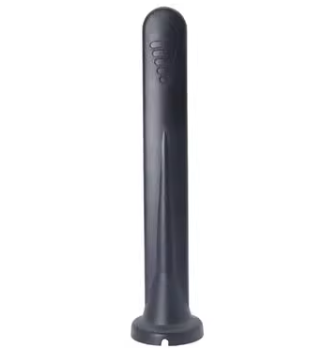Is it better to have a larger antenna gain dbi
In the field of wireless communication, antenna gain is a very important parameter, which directly affects the transmission distance and quality of wireless signals. Antenna gain is usually expressed in dBi (gain relative to an ideal point source). Is it true that the larger the antenna gain dBi, the better? The answer to this question is not simply "yes" or "no", but needs to be analyzed based on the actual application environment and requirements.

We need to understand what is antenna gain. Antenna gain refers to the ratio of the radiation intensity of an antenna in a specific direction to that of an ideal point source (i.e., an imaginary point source that radiates uniformly in all directions) under the same input power condition. Simply put, the higher the antenna gain, the more energy the antenna can concentrate in a specific direction, resulting in a longer transmission distance or better signal quality in that direction.
Why is it not the case that the larger the antenna gain dBi, the better? This is mainly due to the following reasons:
1. Directivity: As the gain of the antenna increases, the directivity of the antenna also increases. This means that the radiation range of high-gain antennas is more focused, suitable for point-to-point linear communication, but in applications that require coverage of a wide area, too high a gain may result in uneven signal coverage.
Signal interference: In dense wireless environments, using an antenna with too high a gain may increase the risk of interference with other wireless devices, especially in situations where frequency resources are tight.
3. Cost and complexity: High-gain antennas are usually more complex in design and costlier. In addition, they may require more precise pointing and installation, which increases the complexity and difficulty of debugging the system.
4. Physical limitations: In some application scenarios, such as indoor distribution systems, due to space constraints, it may not be possible to install large, high-gain antennas.
5. Receiving capacity: For receiving antennas, too high a gain may cause the received signal to be too strong, exceeding the dynamic range of the receiver and causing signal distortion.
When selecting an antenna, the appropriate gain should be determined based on the actual application scenario and requirements. For example, in wireless network coverage and mobile communication scenarios, a medium gain antenna may be needed to achieve good coverage and reasonable signal strength; while in point-to-point links and long-distance communication scenarios, a higher gain antenna may be needed to ensure the transmission distance and quality of the signal.
In addition to gain, other parameters of the antenna, such as frequency range, polarization mode, front-to-back ratio, standing wave ratio, as well as environmental factors such as terrain and building obstructions, need to be considered. Only by considering these factors comprehensively can the most suitable antenna be selected.
The size of the antenna gain dBi is not the only determining factor, but it needs to be selected based on specific application requirements and environmental conditions. In practical applications, the pursuit should be the matching of performance and demand, rather than simply pursuing high gain.





